CRO Best Practices: Skyrocket Conversion Rates
Ekaterina Zotkova
March 12, 2025

If you’re spending on ads but not seeing conversions, you don’t have a traffic problem – you have a conversion problem.
Imagine this: you’ve built a sleek landing page, launched Google and Facebook campaigns, and are seeing strong website traffic. Yet, when you check the numbers, conversions are low, and visitors are leaving without taking action. The issue isn’t visibility – it’s friction in the user journey.
The good news? Conversion Rate Optimization can turn things around. Small, strategic tweaks can drive more sign-ups, sales, and leads without increasing ad spend.
In this guide, we’ll cover conversion rate optimization best practices that will help you turn clicks into customers.
What is Conversion Rate Optimization (CRO)?
Conversion Rate Optimization (CRO) is the process of improving your website or landing pages to increase the percentage of visitors who take a desired action – whether that’s filling out a form, making a purchase, or signing up for a free trial.
Unlike driving more traffic, which can be expensive, CRO focuses on getting more results from your existing visitors. This means identifying friction points, improving user experience, and making it easier for potential customers to say “yes.”
We often advise our clients to do our Conversion Rate Optimization alongside PPC services, since you don’t want to lead your hard-earned paid traffic to unoptimized pages.
Now, let’s dive into the best CRO optimization best practices that can help you get the most out of your traffic.
1. Optimize Page Load Speed (Your Users Won’t Wait)
A slow website kills conversions. If your page takes a long time to load, your users will bounce. Note that websites ranking on the first page of Google usually take only 1.65 seconds (on average) to load. Portent’s study has found that if a site loads in 1 second, it has an average CR of 39%. This number dropped to 18% for websites that took 6 seconds to load.
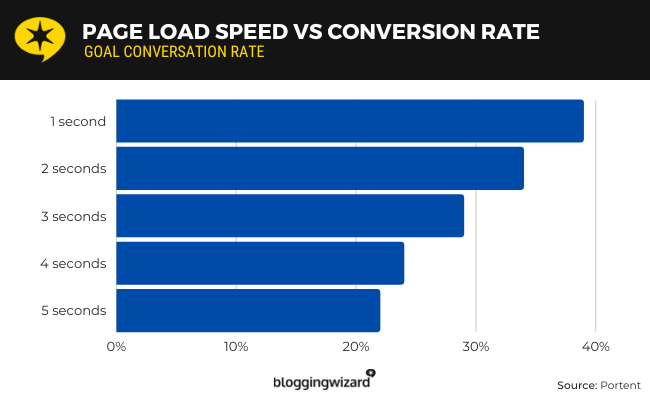
Every additional second of delay results in a drop in conversions, making speed a critical factor in CRO.
Here are some action points for you:
- Use Google PageSpeed Insights to analyze your load time.
- Compress images using TinyPNG or ShortPixel.
- Enable browser caching and use a CDN (Cloudflare, Fastly) to serve content faster.
- Minimize HTTP requests by reducing scripts and unnecessary plugins.
- Choose a fast web host – Google Cloud, AWS, and WP Engine offer great performance.
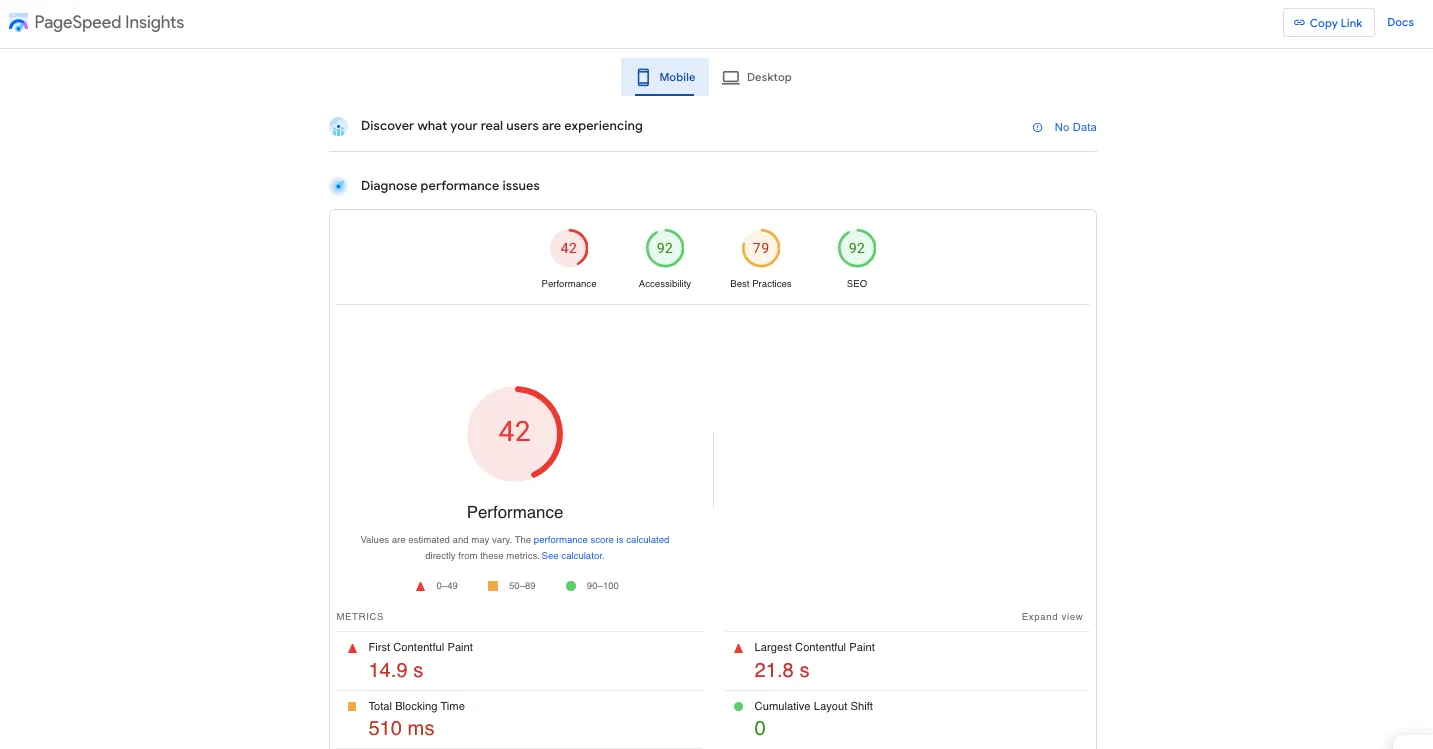
By improving page speed, you ensure that visitors stay engaged long enough to convert.
2. Simplify Your Forms (Shorter Forms = More Conversions)
Long forms create friction. The more fields you ask for, the more likely users will abandon them. You have to simplify it and make it easy for your leads to finish and submit them.
Do you see the difference?
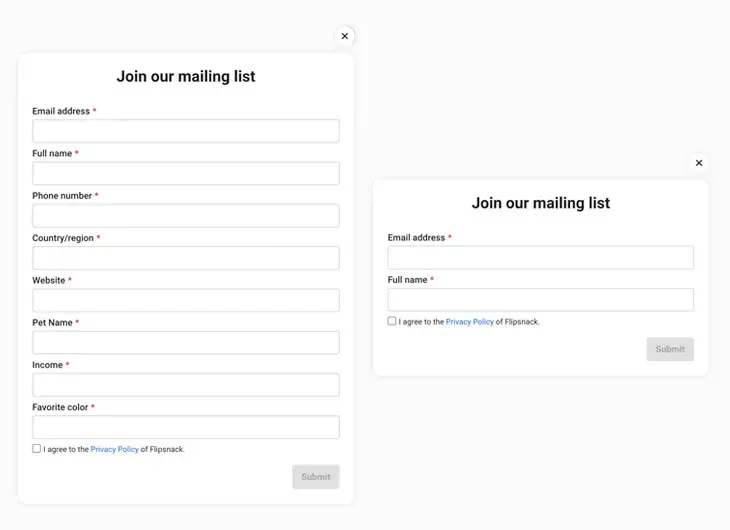
For one of our projects, we tested the lead form that had only a few required fields, the rest were optional. This instantly led to the boost of conversions, but there were more spam leads, too. So this might require a balancing act on your part, and testing for efficiency by looking at the whole sales cycle (how many deals closed).
We ended up switching this minimized form on and off for that particular campaign, to balance the boost in lead gen and quality of leads. This included the requirement for a business email that was on or off, periodically.
How to work with lead forms:
- Use tools like Typeform or JotForm for dynamic, conversational forms.
- Only request essential information.
- Enable autofill, so users don’t need to manually type everything.
- Test breaking long forms into steps (multi-step forms can show higher completion rates).
Your goal is to remove unnecessary obstacles and make submitting the form effortless.
3. Use Clear, Actionable CTAs (No Generic Buttons)
Your Call-to-Action (CTA) is one of the most important elements on your page. If it’s weak or generic, users won’t feel compelled to act. Instead of “Submit” or “Click Here,” use action-driven CTAs that communicate value.
How to boost your CTAs:
- Use high-converting CTA copy like: "Start My Free Trial" instead of "Sign Up", or "Download My Free Guide" instead of "Learn More"
- Make CTAs stand out – use contrasting colors that grab attention.
- Position CTAs above the fold, so users see them immediately.
Tools like Unbounce and Instapage allow you to A/B test different CTAs to find what works best.
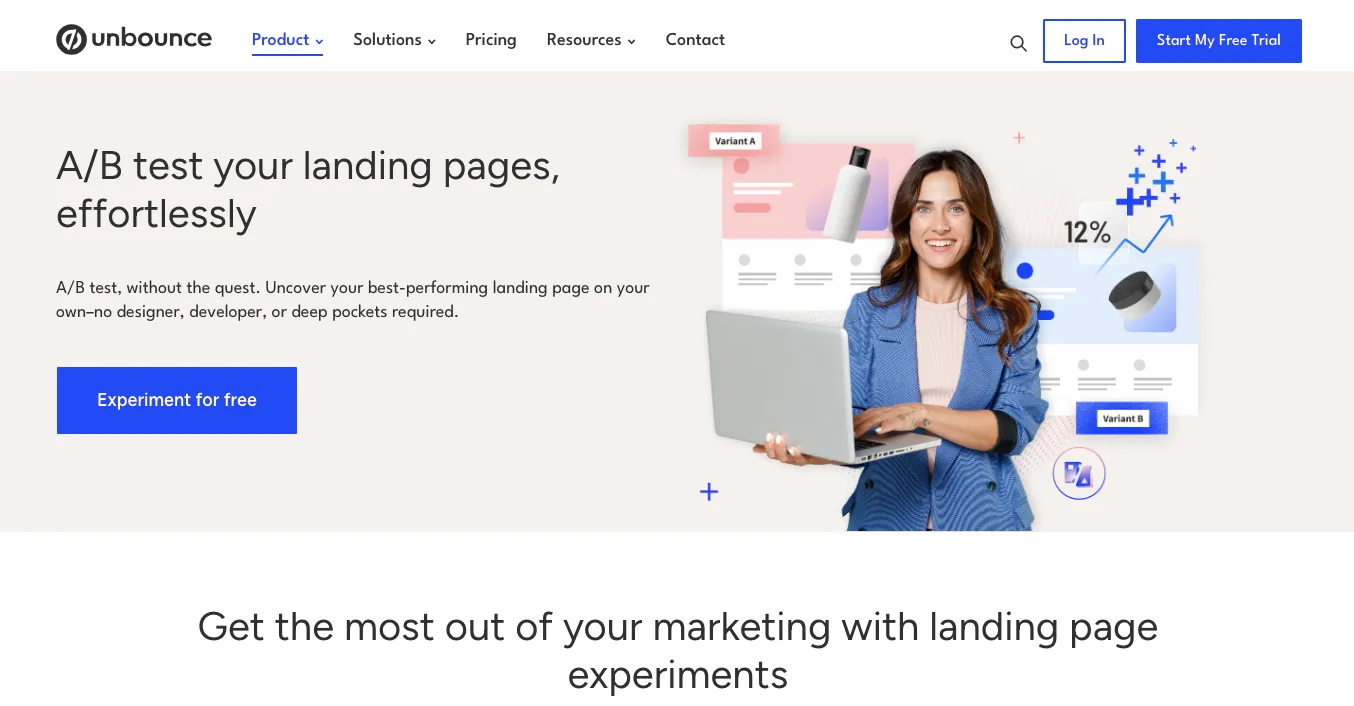
4. A/B Test Everything (Because You Don’t Know Until You Test)
This takes us to the next point: A/B testing removes the guesswork from CRO. Instead of assuming what will work, test different versions of your pages and let the data guide you. Even small changes – like adjusting button colors or rewording CTAs – can result in major conversion lifts.
Here are some ideas for A/B testing:
- Use such tools as VWO, Zoho PageSense, Hotjar, Microsoft Clarity and Crazy Egg for advanced A/B testing (we use all of these!)
- Test one element at a time (headlines, CTAs, images, layout).
- Run tests for at least 2 weeks to get reliable results.
Testing ensures that every decision you make is backed by real user behavior.
5. Optimize for Mobile (Most Users Are on Their Phones)
More than 61.5% of all web traffic comes from mobile devices. Even if you target mostly B2B audience on desktop via Google Ads, your retargeting campaigns might well include some mobile placements via Facebook Ads. If your site isn’t mobile-friendly, you’re losing conversions. Poor mobile experience also lowers the Quality Score of your ads if you are driving paid traffic.
Here’s where to start with optimization for mobile:
- Use mobile-friendly tools (like this one from SE Ranking) to see if your site is optimized.
- Adopt a mobile-first design – buttons should be large and clickable.
- Ensure fast load times on mobile by using AMP (Accelerated Mobile Pages).
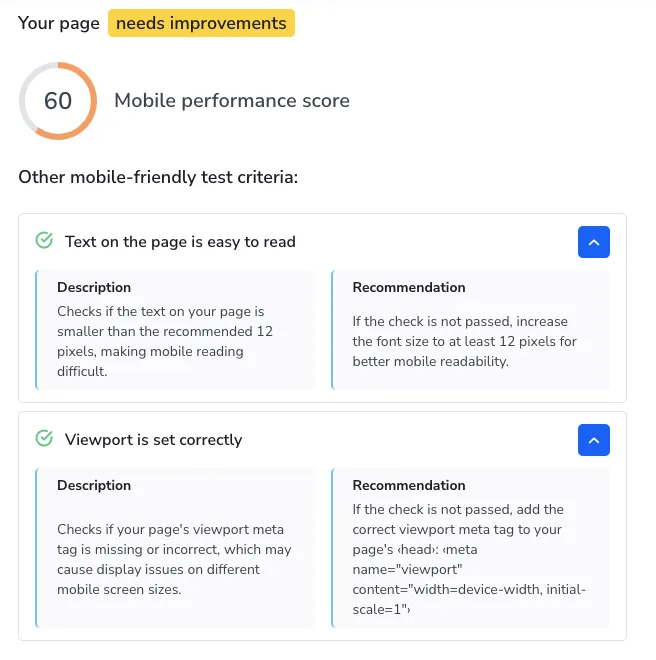
If your page isn’t mobile-optimized, visitors will leave before they even see your offer.
6. Build Trust with Social Proof & Testimonials
People trust real customer experiences more than marketing claims. Adding social proof reassures visitors that your product or service delivers results.
Ideas on how to introduce social proof for your landing page:
- Showcase real customer testimonials (you can use Trustpilot).
- Display recognizable client logos for credibility.
- Use video testimonials – they build even more trust.
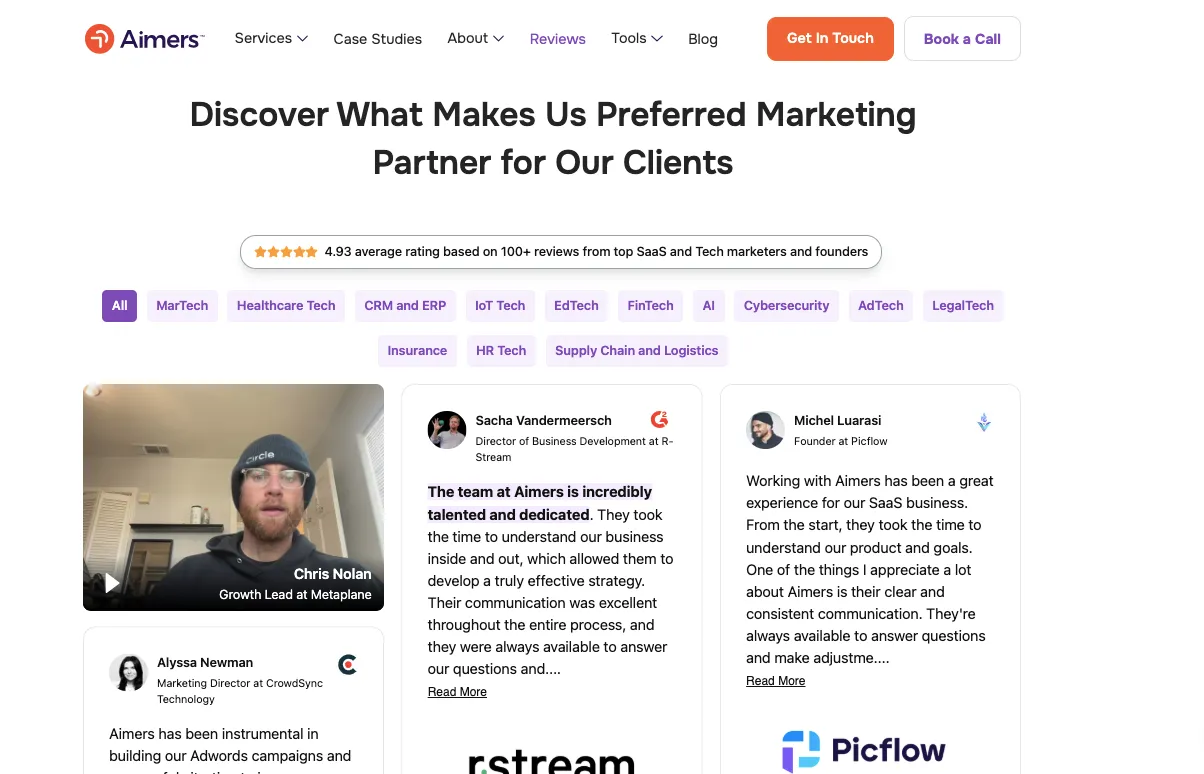
When potential customers see others benefiting from your product, they’ll feel more confident in taking action.
7. Reduce Distractions (Remove the Clutter)
Too many elements – pop-ups, auto-playing videos, multiple CTAs – create decision fatigue. If users are overwhelmed, they won’t convert.
How to fix it:
- Keep your landing pages clean – one main CTA per page.
- Use white space strategically to guide the user’s focus.
- Remove unnecessary navigation links on high-converting pages.
Tools like Hotjar let you see where users get distracted and optimize accordingly.
8. Personalize Your Landing Pages (One-Size-Fits-All Doesn’t Work)
Personalization increases engagement: a generic message won’t resonate as much as one tailored to the visitor’s exact search query, as well as their interests or behaviors.
One of the things we do for our clients is conducting an advanced analysis to align landing pages with the keywords used for PPC. Let’s take a concrete example. You run ads for the webinar solution that can be used for events, among other things, and use “events platform” in some of your ad groups. But your landing page uses only general terms and does not mention events. In this case, we would recommend a re-alignment of the landing page copy for the smoother conversion.
How to personalize your landing pages:
- Use dynamic text replacement (Unbounce offers this feature).
- Segment landing pages based on traffic source (Google Ads, Facebook, organic).
- Show personalized recommendations using AI tools like Optimizely.
The closer the experience feels to the user’s intent, the higher the chance they’ll convert.
9. Add Exit-Intent Popups (Convert Visitors Before They Leave)
Most visitors won’t convert on their first visit. But exit-intent popups can capture their interest before they leave.
Here are some ideas:
- Limited-time discount
- Free resource (ebook, checklist, webinar)
- Chatbot offering help

Tools like OptinMonster and Sleeknote make it easy to implement exit popups that retain visitors.
10. Use Retargeting to Bring Visitors Back
Not everyone converts the first time. That’s why retargeting is one of the highest-ROI marketing tactics available.
How to start using retargeting:
- Install the Facebook Pixel & Google Tag Manager.
- Run retargeting ads showing users the exact product they viewed.
- Use personalized follow-up emails for those who didn’t finish the sign-up or abandoned the cart.
Retargeting keeps your brand top of mind and recaptures lost conversions.
FAQ: Conversion Rate Optimization Best Practices
1. What are the best conversion rate optimization practices?
The best conversion optimization best practices include improving page speed, using A/B testing, simplifying forms, creating clear CTAs, and leveraging social proof to build trust. Optimizing for mobile and reducing distractions also contribute to higher conversions.
2. How do you improve conversion rate optimization for SaaS businesses?
For SaaS companies, the best conversion rate optimization best practices involve optimizing pricing pages, using live chat for engagement, showcasing customer testimonials, and implementing free trials or demo calls. Ensuring a smooth onboarding experience is also crucial. You can check 10 tactics to improve your SaaS landing page conversion rate here. Our UX/UI Designer and CRO expert has also shared 7 CRO mistakes that are affecting your sales – these are worth checking out!
3. What tools help with conversion rate optimization?
Popular CRO tools include Hotjar, VWO, Crazy Egg, Unbounce, and Optimizely. These tools help track user behavior, run A/B tests, and identify drop-off points in the conversion funnel.
4. Why is A/B testing important in conversion rate best practices?
A/B testing removes guesswork by allowing you to test different versions of their pages. It helps optimize CTAs, headlines, images, and layouts based on real user behavior, ensuring data-driven decisions that improve conversion rates.
5. How do mobile optimizations improve conversion rates?
With over 60% of traffic coming from mobile devices, optimizing for mobile ensures a seamless user experience. Mobile-friendly designs, fast load speeds, and easy-to-click buttons help reduce bounce rates and increase conversions.
Takeaways:
Conversion Rate Optimization (CRO) is about making your existing traffic work harder for you. Instead of pouring more money into ads, improving how your visitors interact with your website can significantly increase conversions. Here are the key takeaways:
- Page speed matters – slow sites lose visitors before they convert.
- Forms should be optimized – reduce friction and remove unnecessary fields.
- CTAs need to be compelling – action-driven copy leads to higher engagement.
- A/B testing is essential – what works best is determined by data, not guesswork.
- Mobile optimization is a must – most users browse on their phones.
- Trust signals like testimonials and social proof increase conversions.
- Landing pages should be distraction-free – remove clutter to improve conversions.
- Personalization drives results – tailor messaging to different user groups.
- Exit-intent popups help capture lost conversions before visitors leave.
- Retargeting keeps your brand top-of-mind and brings users back to convert.
By implementing these best practices, you’ll not only improve your website and landing pages’ performance but also maximize ROI from your paid and organic traffic.
At Aimers, we specialize in Conversion Rate Optimization (CRO) for SaaS and tech companies, helping you turn traffic into paying customers.
Our CRO services include:
- CRO audits & landing page redesigns for better conversion performance.
- A/B testing & analytics to ensure data-driven decision-making.
- Personalized CRO strategies tailored to your unique audience.
For example, our CRO team has helped Originality.ai to boost homepage’s conversion rate 47% and a specific tool’s landing page 148%!
To learn more, browse through our CRO offering or book a quick intro call with our team: aimers.io/contacts.












